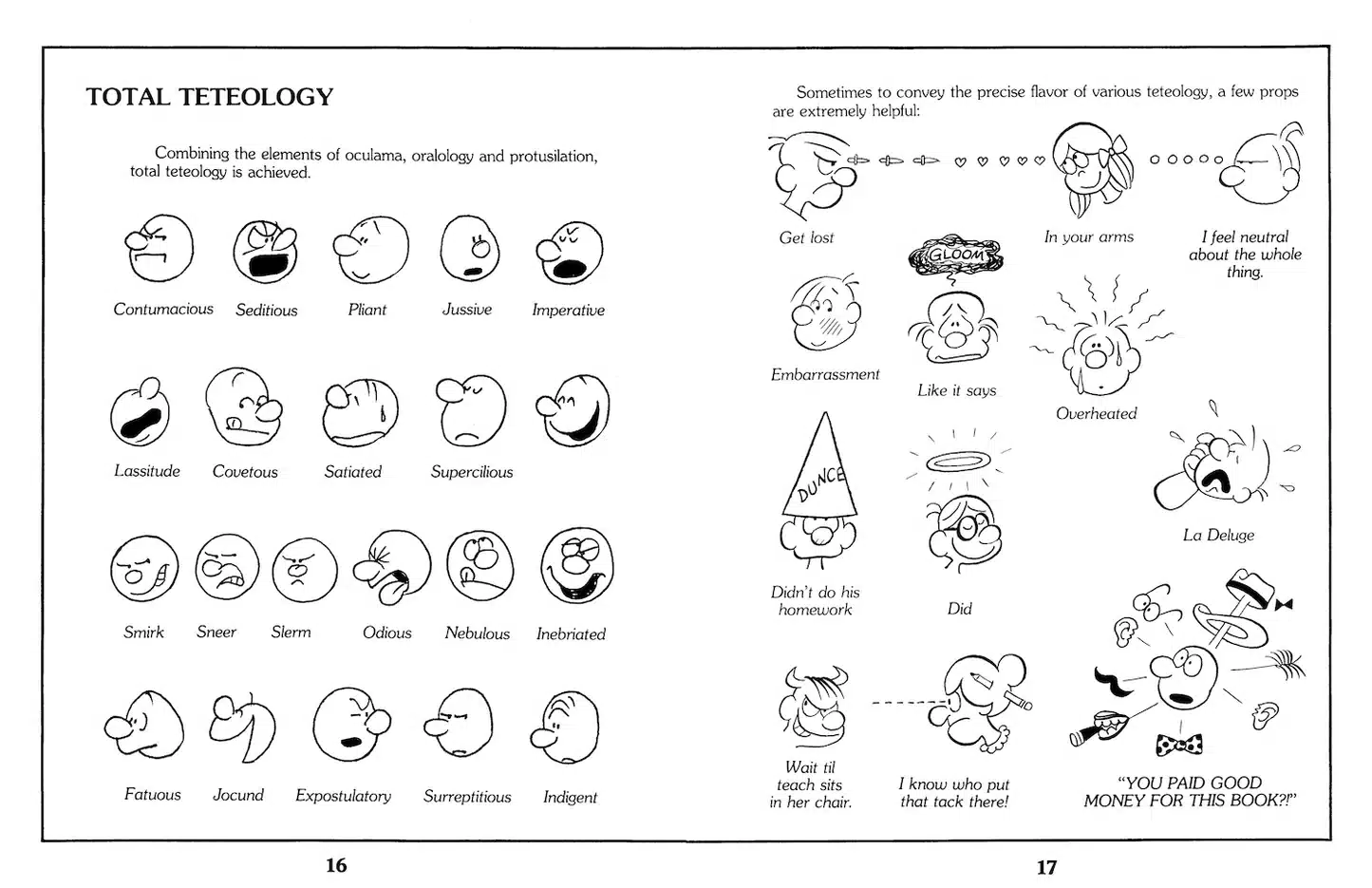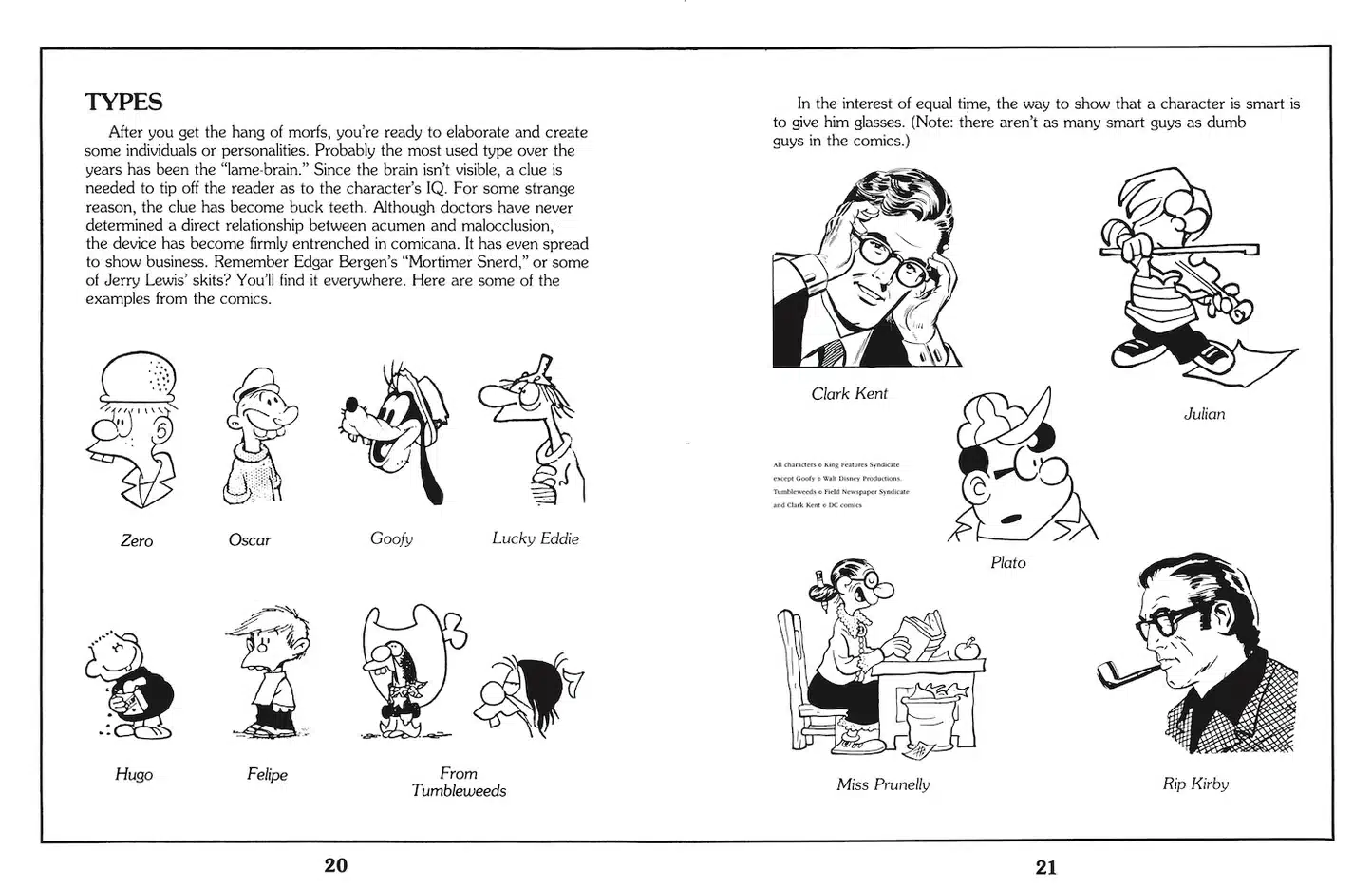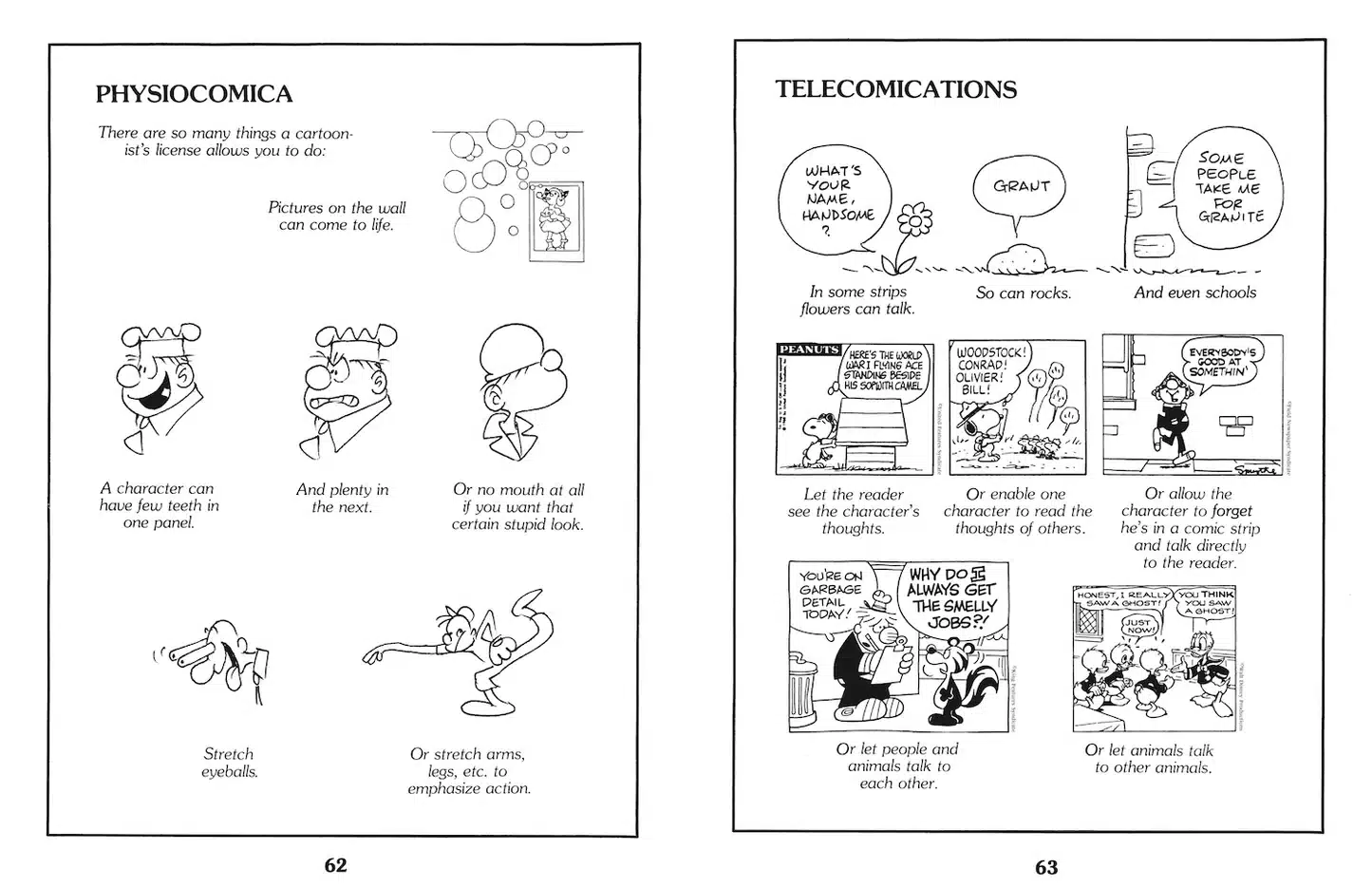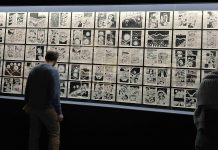One of the most charming and quirky documents covering comics language is Mort Walker’s The Lexicon of Comicana. The creator of Beetle Bailey put together a thorough study of what he called “teteology” – the study of how cartoon facial expressions express emotion – and other comics language. It’s mostly stuff we have absorbed almost subconsciously:
“Teteology” is just one of a vast lexicon of terms that Walker created to catalog the effects of cartooning in the book, which was originally published in 1980 as a sort of humorous takeoff on guide books. And new a new editions is on its way from NY Review Books:
For Mort Walker, creator of the iconic Beetle Bailey, the language of comics is universal. It’s in our road signs and user’s manuals; it’s hidden behind our mischievous expressions, our japes and gripes, our puns and jokes. The Lexicon of Comicana is his madcap attempt to catalog the colorful, motley system of comics, from the types of speech bubbles (“fumetti”) to the shapes of bodies (“morfs”) to the pell-mell lines surrounding a fierce scuffle or trailing behind a sprinter (“blurgits”). There is a guide to identifying comic stereotypes (the tramp by his bindle, the rich man by his top hat and cane), a catalog of “trite and trite again” overdone situations (the desert island, the bed of nails, the psychiatrist and his couch), and a guide to “maladicta,” the sly ways of concealing naughty words in newsprint, called “jarns,” “quimps,” “nittles,” and “grawlixes.”
More information on the book here:
A preview:

















